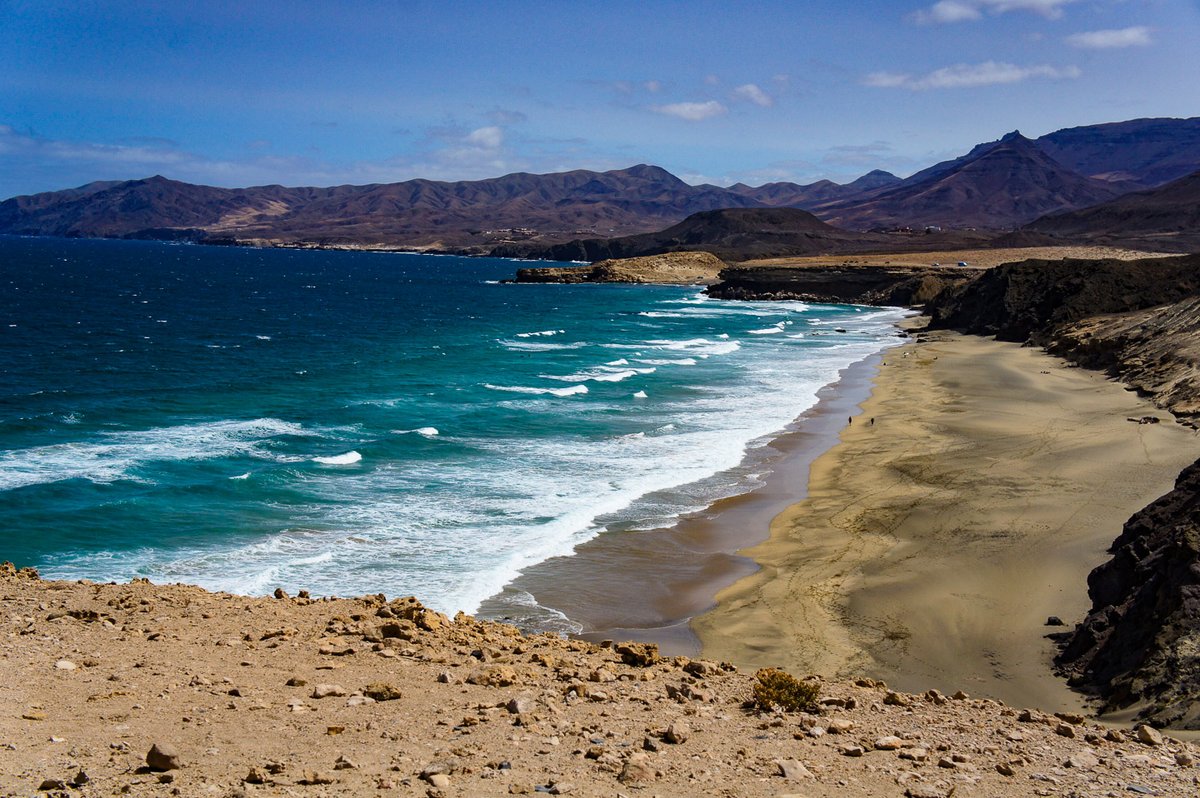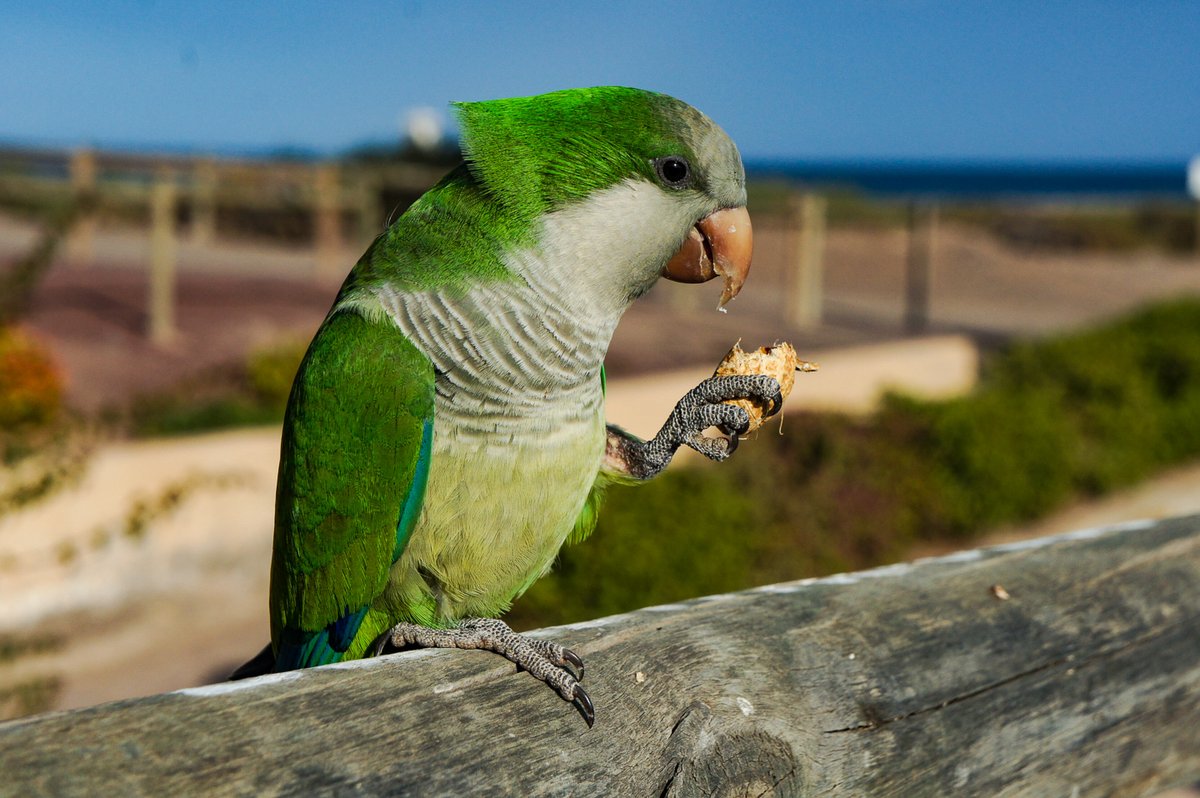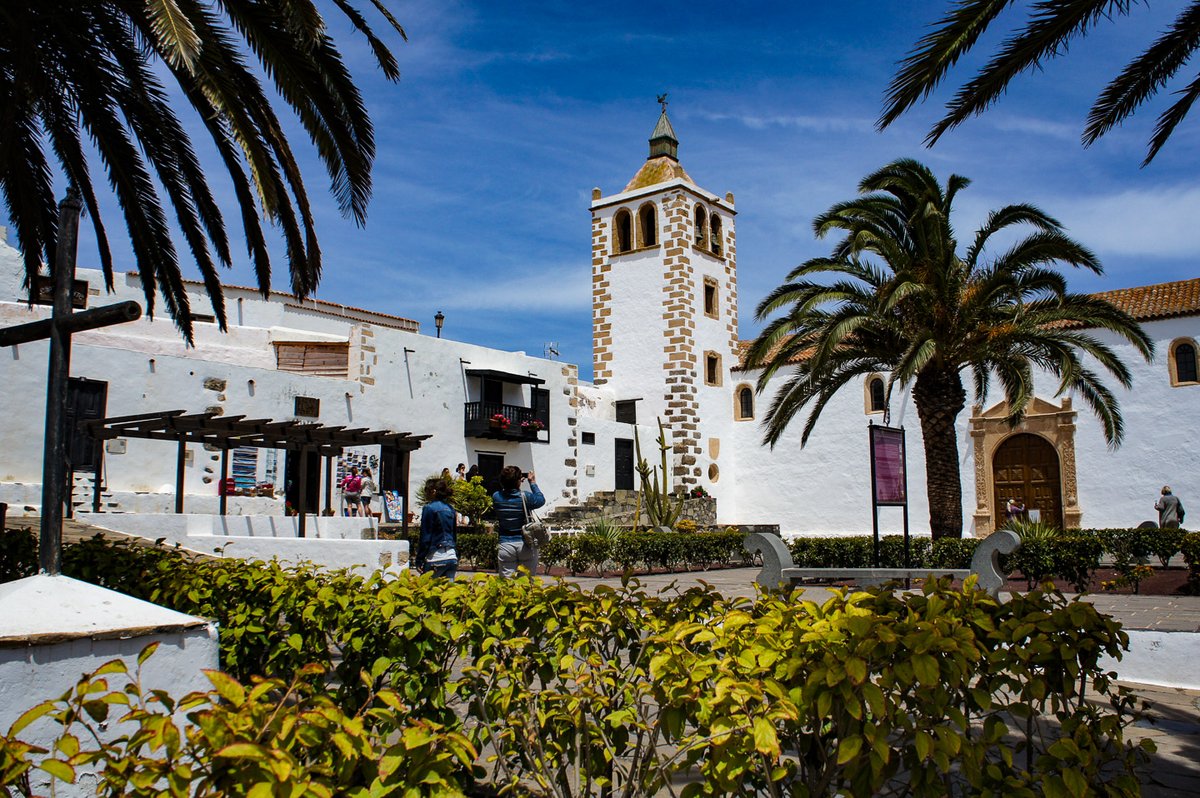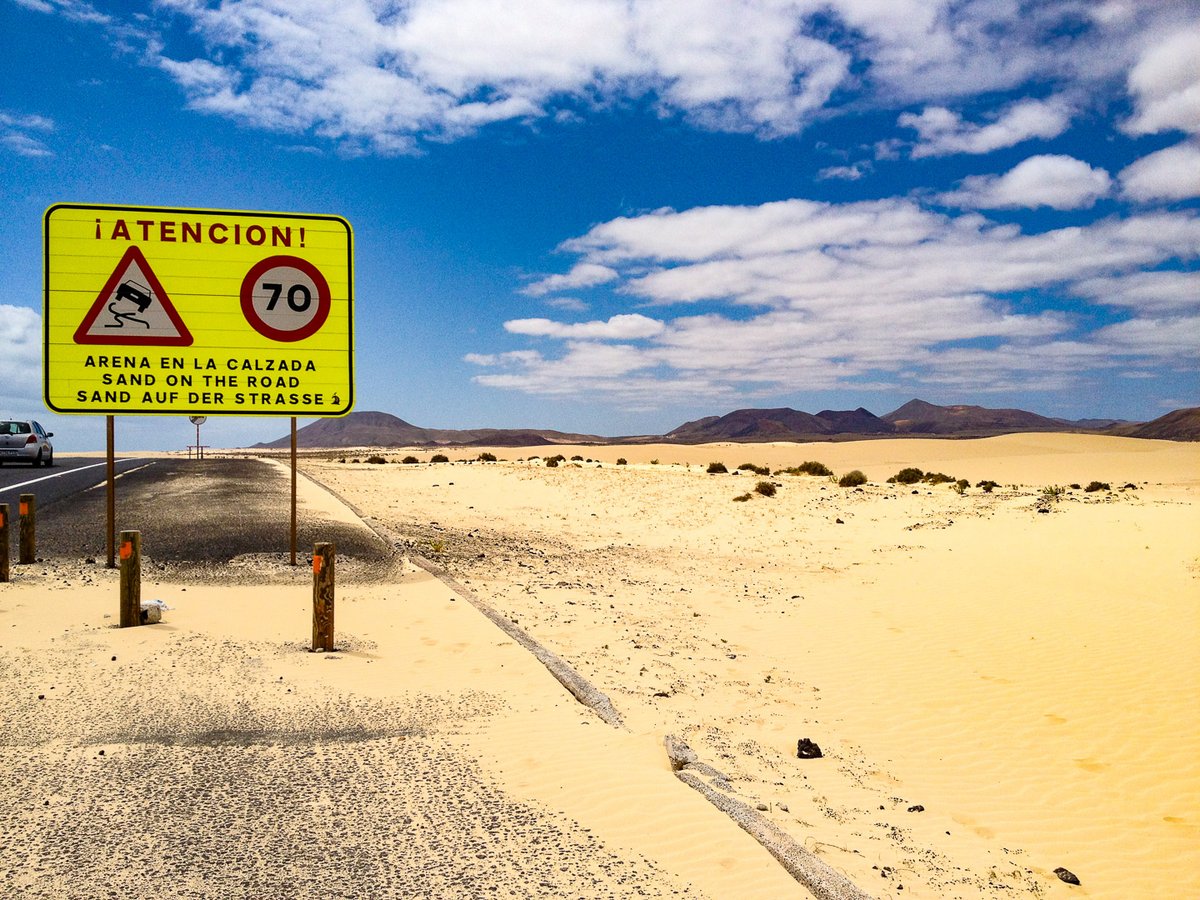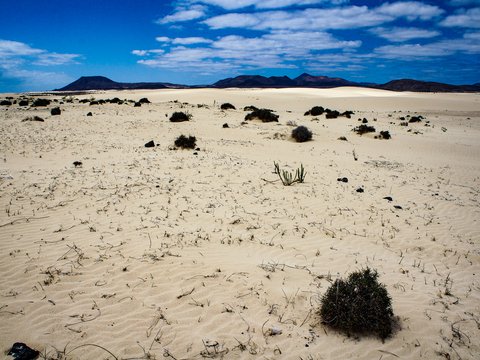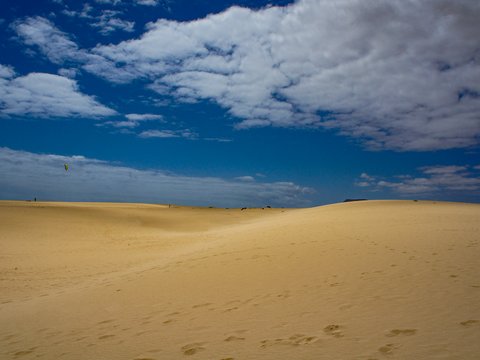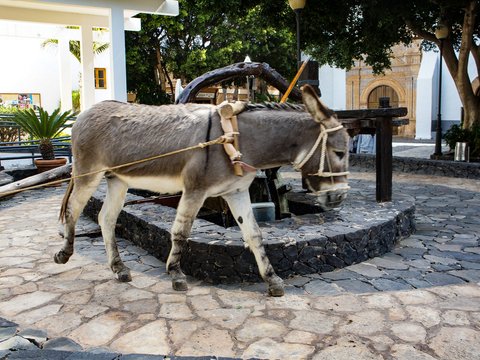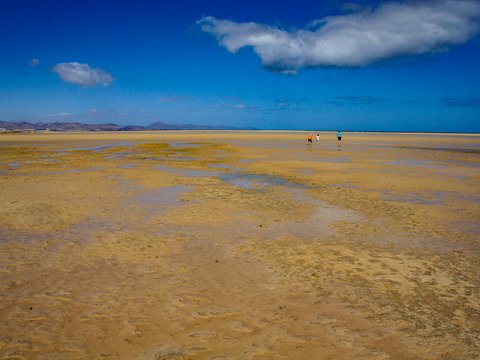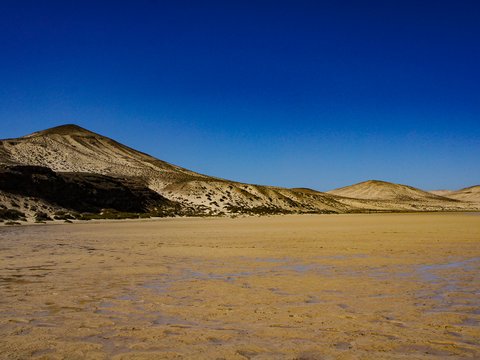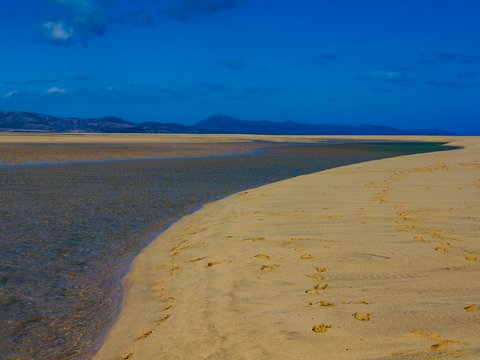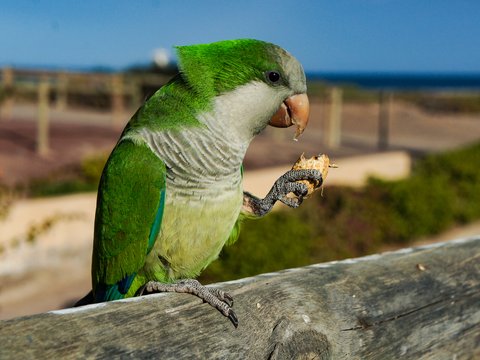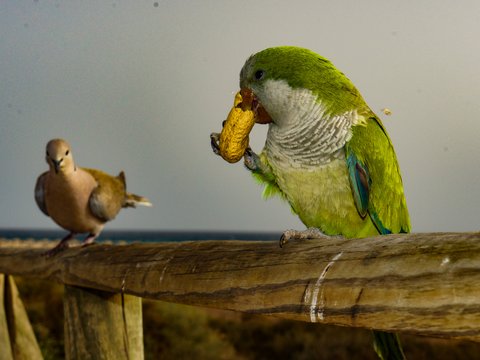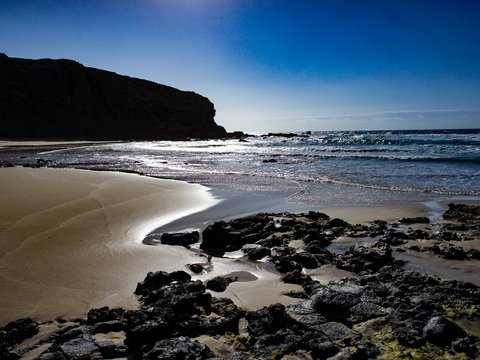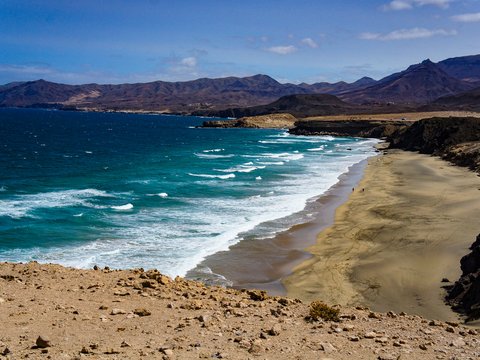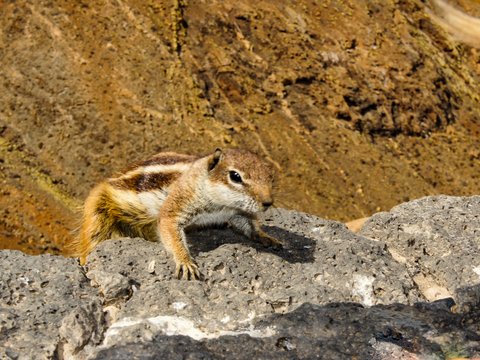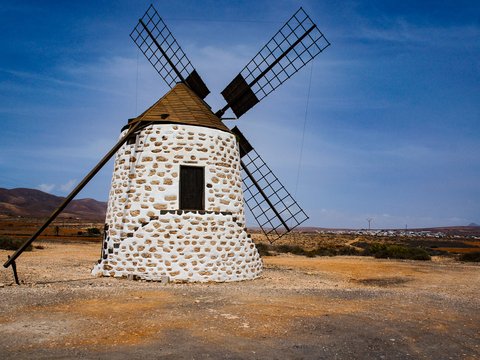More than 150 kilometres of beaches invite you to enjoy the sun and the sea air and to feel like in paradise. Fuerteventura stands for water and sand. Here you will find extensive beaches of different types and you can choose depending on the mood of the day: for a sporty day in the waves, a walk on the lonely beach, a culinary excursion to the local gastronomy or a relaxing evening at sunset.
After an almost 4-hour flight you will be welcomed by a coastal landscape of white sand and emerald green water. Fuerteventura is the second largest of the Canary Islands belonging to Spain and lies in the Atlantic Ocean, 100km from the north coast of Africa. The long island can be visited all year round due to the warm climate - thanks to a cooling wind it is rarely really hot even in the summer months. The island is framed by a multitude of beaches, between which there are rocks and small sheltered bays. If you like surfing, windsurfing or kitesurfing, you are in the right place at "Fuerte", as the locals say. The volcanic landscape and the purity of the beaches have not remained hidden from UNESCO, which declared the island a biosphere reserve in 2009.
To get an impression of the whole island, I recommend a rental car and accommodation in the north or south. We decided to rent a bungalow in La Pared in the south. Away from the hustle and bustle, but close enough to represent our feet quickly in the biggest sandbox of the island. The golden yellow beaches with crystal clear water of the long stretched peninsula Jandía are on the south side a paradise for sun worshippers, wind- and kitesurfers, divers as well as golf fans. Apart from the extensive holiday resorts Costa Calma, Esquinzo and Jandia, there are enough lonely beach sections outside these places. If you are looking for a little adventure, a quad tour over the bumpy slopes at the almost deserted western tip of the peninsula is recommended. Animal lovers will find semi-tame chipmunks and monk parakeets in Jandia Playa in the immediate vicinity of the cachalote, a skeleton of a sperm whale that stranded here in 2005.
In order to explore the north, a day tour through the mountains with countless marvellous views over the island offers itself as for example at the Mirador de Morro Velosa. A stop is also worthwhile in the old capital Betancuria, where you can taste the best goat cheese of the island. The former Franciscan monastery gave the cheese brand El Convento its appropriate name. Everything at Casa Princess Arminda revolves around food. Traditional dishes such as Canarian tapas are served here - e.g. fried sardines or papas arrugadas (wrinkled potatoes with salt crust) - and for those who are hungry, a tender ragout of lamb or goat is recommended.
We continue to El Jable, the dune field with rare animal and plant species. On 27 km2 there is sand as far as the eye can see. Since 1982 beaches and shifting dunes are protected together as Parque Natural de Corralejo and remained protected from buildings. The connection to the sea is made by white sand playas, one of the most beautiful on the island. For those interested in culture, we recommend a detour to Casa Mané, a mansion with creative gardens and an underground hall with modern Canarian paintings and sculptures. In Corralejo, the largest holiday centre on the island, you can do good shopping as well as bathing and beauty treatments. On the way back, you can admire the photogenic Molinos on the mill route - until the 1960s the mills turned in the trade wind to grind the grain grown here.

To properly prepare for your trip
How you get there:
Nonstop from Zurich with Edelweiss
How you get around:
With a rental car e.g. from www.billiger-mietwagen.de
How long am I supposed to go:
1 to 2 weeks
Best travel time:
all year round
Highlights:
El Jable, Betancuria, Casa Mané, Halbinsel Jandia.
More info:
www.hallokanarischeinseln.com
Realised by Michael Bachmann
Further travel pictures under www.kissed-by-nature.com
